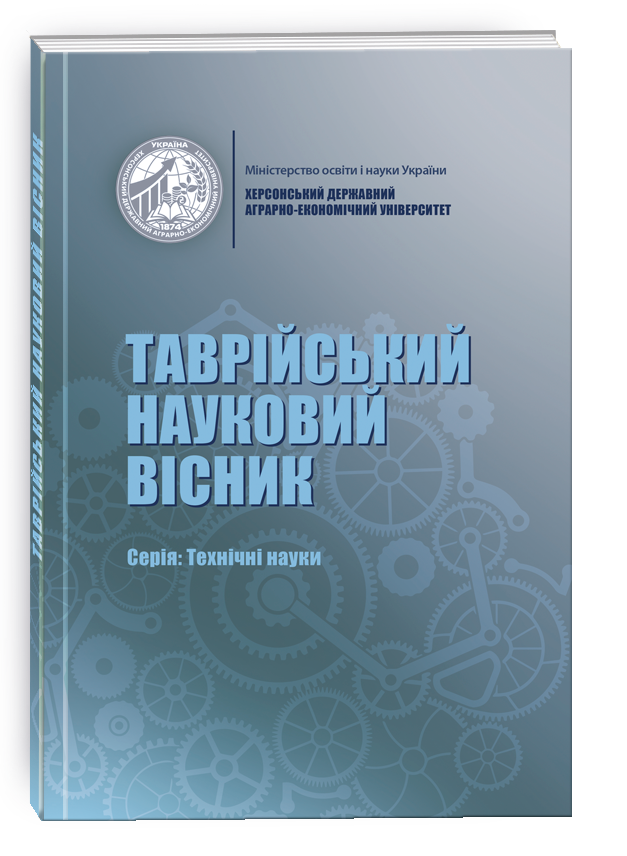КОМП’ЮТЕРНЕ МОДЕЛЮВАННЯ ІНДУКОВАНОГО ВОДНЕМ МАСОПЕРЕНОСУ У НАПІВПРОВОДНІКАХ
DOI:
https://doi.org/10.32782/tnv-tech.2023.2.13Ключові слова:
термодинаміка, рівноважна концентрація, масопереносАнотація
У зв’язку з широким використанням мідних провідників у мікроелектроніці постає проблема моделювання процесів, що відбуваються при дії активних газів на поверхню підкладки. Ситуація ускладнюється ще й тією обставиною, що для отримання кінцевого результату в конкретному процесі окремі частини системи спеціально піддаються впливу зовнішньої сили. Це ускладнює термодинамічне моделювання систем, в яких істотне значення має як розташування меж фаз, так і розподіл речовин за об’ємом. На основі термодинамічних принципів запропоновано модель поведінки проникнення міді в германій з плям на поверхні під дією розпиленого водню. Було припущено, що частина енергії, яка вивільняється на поверхні, передається кристалічній решітці та атомам міді та викликає зміщення рівноваги. Виведено диференціальне рівняння, яке описує поширення відхилень від рівноважного складу, а також показано метод складання для нього граничних умов. Наведено результати моделювання системи водень-германій-мідь і отримано залежність концентрації дифундованої міді від концентрації надрівноважного розпиленого водню. Доведено, що збільшення розпилення водню забезпечує збільшення числа атомів міді в германію. Таким чином, стаціонарний стан хімічної гетерофазної системи, викликаний точковим джерелом збурення хімічного складу, описується за допомогою мінімумів функціоналів, що відповідають зсуву вільної енергії Гіббса від рівноважного значення в елементарні комірки системи, розподіл яких по системі описується диференціальними рівняннями виду. У цьому випадку завдяки врахуванню зон (елементарних осередків), що межують з межею розділу фаз, описується не тільки розчинення домішки в твердому тілі, а й сорбційні явища. Також наведено результати застосування моделі в розширеному реакторі для системи H-H2 та показано відповідність результатів класичній схемі розв’язання задачі за рівняннями масопереносу.
Посилання
Wenxiao Hu, Kai Chen, Tao Tao, et all. High-rate growth of single-crystal diamond with an atomically flat surface by microwave plasma chemical vapor deposition. Thin Solid Films. 2022. Nanjing, China. Vol. 763.
Lantos P.V., Jonson N.M., Street R.A. Light-enhanced hydrogen motion in SiH. Phys. Rev. Lett. 1991. Vol 67. no. 19.
Lavrenko V.A., Podchernyaeva I.A., Shchur D.V., Zolotarenko A.D., Zolotarenko, A.D. Features of Physical and Chemical Adsorption During Interaction of Polycrystalline and Nanocrystalline Materials with Gases. Powder Metallurgy and Metal Ceramics. Ukraine, 2018. Vol. 56, Issue 9–10. P. 504–511.
Юрченко І.О., Авраменко А.І., Щербак М.О. Фізична та колоїдна хімія Physical and colloidal chemistry. Ukraine : «Магнолія 2006», 2021. 950 с.
Boll R.H. Calculation of complex equilibrium with an unknown Number of Phases. Journ. Chem. Phys. Vol. 34, 1960. P. 1108–1110.
Sancier K.M., Morrison S.R. Wisendanger H.V.O. Catalysis and chemical reaction rat of hyrogen atom with germanium. J. Catalysis. 1966. Vol. 5. № 2. P. 361–365.
Mafliet W. Series solutions of nonlinear coupled reaction diffusion equations. J. Phys. Appl. № 23. 1991. P. 5499–5503.
Jacucci G.,Poseth M. Monte Carlo calculation of latticevacancies by the method of overlapping distribution. Solid State Comm. 1980. Vol. 33, 11. P/ 35–37.
Anderson J.O., Agen J. Models for numerical treatment of multicomponent diffusion in simple phases. Appl. Phys. Vol. 72, 1992. № 4. P. 1350–1353.
Wise H., Wood B.J. Reactive collision between gas and surface atoms. Adv. at. and mol. Phys. 1967. Vols. 3. P. 290–353.
Model calculations for hydride nucleations on oxide-coated metallic surfaces. J. alloys and Compounds. 1992. Vol. 1. P. 11–23.
Johnson N.M., Doland C., Ponce F. Hydrogen in crystalline semiconductors. A review of experimental results. Physica B. 1991. Vol. 1–4. № 3–20. P. 3–20.
De Groot, Masur S. Nonequilibrium thermodynamics. USA : Courier Corporation. 1984. P. 510.
De Groot. About thermodynamics irreversible heat and a mass exchange. Heat and mass transfer. Минск : Наука и технологии. 1965. P. 63–70.
Bumstead H. A., Gibbs J. W. Scientific Papers of J. Willard Gibbs. 2015. Thermodynamics. USA : Creative Media Partners, LLC.
Lopushanskaya A.M. (Ed.). Thermodynamics of irreversible processes : Sci. works. 1992. Ukraine : Academy of Sciences of the USSR of IOHRAN.
Раман Б.В. Механизм и кинетика сложных реакций. / Київ : Металургия, 1970.
Kressel G., Nelson G. In book: Physics of thin films. Київ, Наукова думка dumka, 1982. С. 79–144.
Kröger F. The Chemistry of Imperfect Crystals: Imperfection chemistry of crystalline solids. 1973. Holland : North-Holland Publishing Company.







